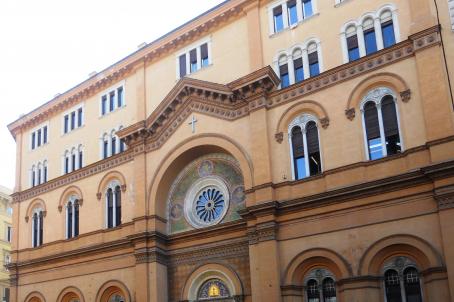Chiesa di Santa Maria di Loreto

The church of Santa Maria di Loreto is a Renaissance church built between 1507 and 1585 to the octagonal plan of Antonio da Sangallo the Younger. The dome and lantern were completed by Jacopo Del Duca 75 years later. The church is built on the site of a former 15th-century chapel, which contained an icon of the Virgin of Loreto; the present church has retained the icon and taken its name.





